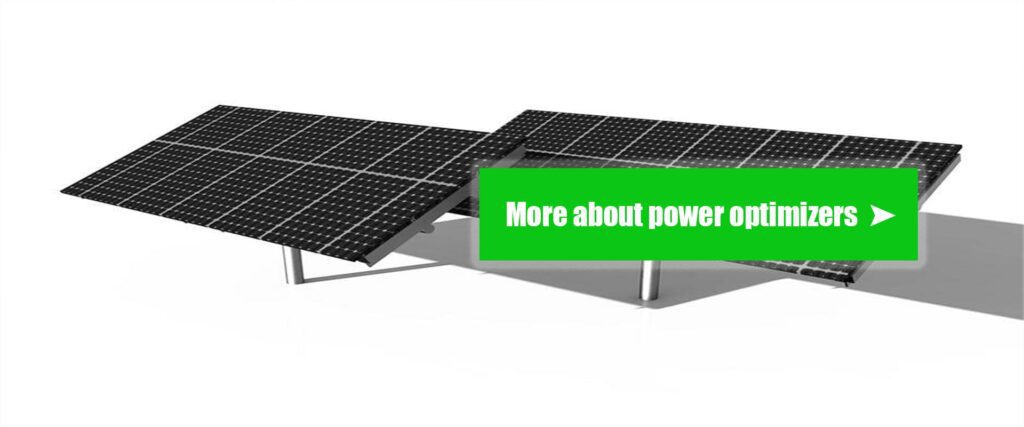With solar energy constantly evolving, innovative technologies have been developed to achieve efficiency and optimal power generation. Due to my extensive experience in the solar industry, I am eager to learn how a solar panel efficiency optimizer seamlessly integrates with different types of solar panels and inverters. I will also explain how to choose and integrate these optimizers into a photovoltaic (PV) system based on key considerations.

Efficiency Optimizers: The Driving Force
By ensuring that each solar panel operates at its peak power point, solar panel efficiency optimizers are designed to maximize the efficiency of solar panels. In scenarios with shading, temperature variations, or mismatches between panels, this is particularly important. PV system efficiency is enhanced by these optimizers, which bridge the gap between individual panels and the system’s overall performance.

Working in Harmony with Various Panel Types
A unique feature of solar panel efficiency optimizers is their versatility in working with different types of solar panels. Efficiency optimizers can be integrated seamlessly into monocrystalline, polycrystalline, thin-film, or advanced technology panels. By regulating the voltage and current of each panel, they ensure that they contribute optimally to the overall power generation process.

Integration with Inverter Systems
Integrating efficiency optimizers with different types of inverters is critical to maximizing the potential of PV systems. Solar inverters convert DC power from solar panels into AC power used by homes and businesses.
-
String Inverters: Efficiency optimizers work harmoniously with string inverters, ensuring that the overall output of a string is optimized. The optimizers counter the common problem of underperforming panels dragging down the output of a string by managing the performance of each panel within a string.
-
Microinverters: The compatibility of efficiency optimizers with microinverters is equally compelling. Designed for individual panels, microinverters maximize their potential. Combined with efficiency optimizers, the system achieves an even higher level of power point tracking accuracy, which is especially helpful in cases of shading and mismatches.
-
Power Optimizers: Some PV systems are designed with power optimizers, which are akin to a middle ground between string inverters and microinverters. An efficiency optimizer augments the capabilities of a power optimizer, allowing fine-tuned control over the performance of each panel.
Key Considerations for Selection and Integration
There are several factors to consider when selecting and integrating a solar panel efficiency optimizer into a PV system:
-
System Size: The size of the PV system will influence the number of optimizers required. For comprehensive coverage, larger systems may require more optimizers.
-
Panel Orientation and Shading: Systems that experience shading, or have panels with varying orientations, will greatly benefit from efficiency optimizers. A critical advantage of the optimizer is its ability to mitigate shading effects.
-
Panel Mismatch: Systems with panels from different manufacturers or batches may have performance mismatches. Using efficiency optimizers, these disparities can be managed effectively, ensuring uniform results.
-
Inverter Type: The type of inverter system in use—string inverters, microinverters, or power optimizers—will impact the optimizer’s role and compatibility.
-
Monitoring and Control: Consider whether the efficiency optimizer offers real-time monitoring and remote control capabilities. System owners can monitor individual panel performance and address issues as soon as they arise with these features.
The Sunpv Technology Solar Power Optimizer
It is noteworthy that Sunpv Technology offers a solar power optimizer that aligns with the principles discussed, but I intend to provide an informed analysis rather than focus on products. As the industry trends to energy storage solutions, this optimizer offers Wi-Fi connectivity for real-time monitoring, as well as battery integration.
Finally, solar panel efficiency optimizers provide a valuable tool in achieving enhanced energy production and optimal system performance. Using efficiency optimizers is guided by factors such as system size, shading, and inverter type. Their compatibility with a variety of panel types and inverter systems underscores their versatility. Efficiency optimizers are a beacon of innovation in the solar industry, contributing to the revolution in sustainable energy as it continues to grow.
I invite you to visit our website at www.sunpvsolar.com or email us at [email protected] to learn more about solar panel efficiency optimizers and how they can transform your PV system. In addition to providing solar energy projects with the tools they need to thrive in a rapidly changing environment, we extend our commitment beyond products.




